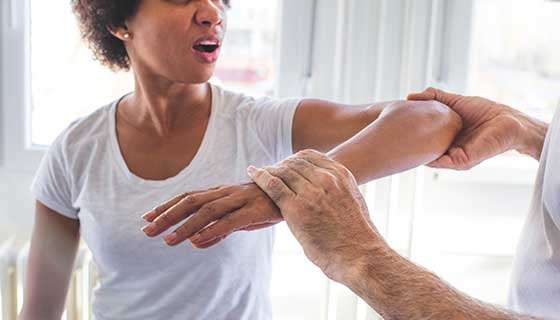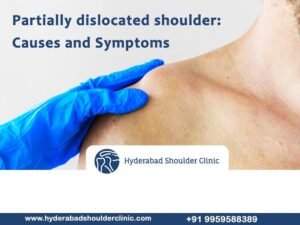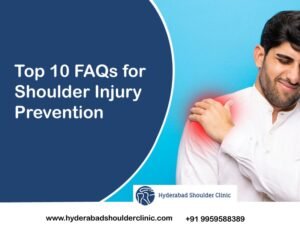The failure of a rotator cuff surgery might be due to larger tears that may have a lower success rate, as repairing them can be more complex and challenging. Issues such as infection, inadequate blood supply, or scarring can interfere with the healing process. Failure to follow a proper post-surgery rehabilitation program can lead to stiffness, weakness, or re-injury. Age, overall health, and activity level can affect recovery. Comorbidities like diabetes or osteoporosis may hinder healing. The skill and experience of the surgeon performing the procedure can significantly influence the outcome. In some cases, the anatomy of the shoulder joint or pre-existing conditions may lead to mechanical problems that affect the repair. A re-tear of the repaired tendon or a new injury can occur, leading to persistent pain or dysfunction. Understanding these factors can help in setting realistic expectations and improving the chances of a successful outcome of rotator cuff surgery.
Failed rotator cuff surgery in Hyderabad: Consult now Dr Chandrashekhar

If a rotator cuff surgery does not achieve the desired results, patients have several options to consider for further management and recovery:
Comprehensive Physical Therapy: After a failed surgery, a well-structured physical therapy program can be crucial in regaining strength and improving shoulder functionality. Dr Chandrashekhar B can design a personalized rehabilitation protocol that focuses on progressive exercises to enhance flexibility, strength, and stability of the shoulder joint. This may include modalities such as ultrasound therapy, manual therapy techniques, and targeted strengthening exercises for the rotator cuff muscles.
Pharmacological Interventions: To alleviate persistent pain and reduce inflammation, the use of anti-inflammatory medications, such as nonsteroidal anti-inflammatory drugs (NSAIDs), is common. Additionally, corticosteroid injections directly into the shoulder can provide significant relief from pain and inflammation, offering a temporary solution while exploring longer-term strategies.
Activity Modification Strategies: Patients may benefit from reassessing and modifying everyday activities to avoid movements that could exacerbate symptoms. This could involve ergonomic adjustments in daily tasks, avoiding heavy lifting, or using assistive devices to minimize strain on the shoulder.
Surgical Revision Options: For individuals with persistent pain and dysfunction, a revision surgery might be necessary. This could involve re-repairing the rotator cuff, where the surgeon reattaches the tendon to the bone using advanced techniques and possibly additional grafts to enhance the repair. In cases of severe degeneration, alternative procedures like tendon transfers (where a nearby tendon is used to replace the damaged rotator cuff) or shoulder joint replacement surgeries may be advised.
Innovative Regenerative Medicine: Regenerative medicine treatments, such as platelet-rich plasma (PRP) therapy, leverage growth factors derived from the patient’s own blood to promote healing and tissue regeneration. Similarly, stem cell therapy might be an option for some patients, as this treatment aims to enhance the body’s natural repair processes.
Shoulder Arthroplasty: In cases where there is significant degeneration of the shoulder joint and conservative measures have failed, shoulder arthroplasty may be considered. This includes total shoulder replacement, where both the humeral head and the glenoid are replaced, or reverse shoulder replacement, which is particularly useful for individuals with massive rotator cuff tears and arthritic changes.
Multimodal Pain Management: In certain instances, a focus on pain management through a multimodal approach may be warranted. This could encompass a combination of pharmacotherapy, physical therapies, and complementary approaches, such as acupuncture, chiropractic care, or massage therapy, to provide holistic relief and improve the quality of life.
Seeking Second Opinions: Consulting with Dr Chandrashekhar who has experience managing complex cases of rotator cuff repairs can provide valuable insights and alternative treatment options. A thorough reassessment may reveal underlying issues that were not addressed in the initial procedure and could inform a more effective treatment strategy moving forward.
Discussing these options in detail with a healthcare provider is essential to tailor a treatment plan that aligns with the patient’s specific condition, expectations, and lifestyle.
How to avoid failure of rotator cuff surgery?

To minimize the risk of failure following rotator cuff surgery, patients can take several proactive steps:
- Choose an Experienced Surgeon: Selecting a surgeon like Dr Chandrashekhar B, who has expertise in rotator cuff repair can make a significant difference in surgical outcomes.
- Pre-Surgery Assessment: Before the surgery, a thorough evaluation is crucial. This includes imaging studies (like MRI) and assessments for any underlying medical conditions that could affect healing, such as diabetes or vascular issues.
- Optimize General Health: Supporting overall health can facilitate a better recovery. This may involve managing chronic conditions, maintaining a healthy weight, quitting smoking, and following a balanced diet rich in nutrients that promote healing, such as proteins, vitamins, and minerals.
- Adhere to Post-Operative Instructions: Following Dr Chandrashekhar B’s, post-operative care plan. This includes wearing any prescribed braces or slings, managing incision care properly, and adhering to prescribed medications for pain management.
- Engage in Physical Therapy: Participating in a supervised physical therapy program post-surgery can enhance recovery. A therapist will guide patients through exercises designed to restore strength, flexibility, and range of motion while ensuring that the healing rotator cuff is not overstressed.
- Gradual Return to Activity: Patients should gradually resume normal activities and refrain from heavy lifting, overhead movements, or sports until cleared by their surgeon. Engaging in sports or strenuous activities too soon can risk re-injury.
- Strengthening the Shoulder: Prior to surgery, engaging in physical therapy to strengthen surrounding muscles, such as the deltoids and scapular stabilizers, can help create a more stable shoulder environment. Post-surgery, continuing to strengthen these muscles can provide further support.
- Understand Limitations: Have open discussions with Dr Chandrashekhar B, about realistic expectations regarding recovery and post-operative shoulder function. Understanding what activities may be limited can help prevent strain on the shoulder.
- Regular Follow-Up Visits: Attending all scheduled follow-up appointments is crucial for monitoring the healing process. Any concerns or unexpected symptoms should be discussed with the healthcare provider promptly.
- Consider Lifestyle Adjustments: Making changes such as ergonomically adjusting workspaces, learning safe lifting techniques, and avoiding repetitive overhead movements in daily life can significantly reduce the likelihood of re-injury.
By taking these proactive measures and working closely with healthcare professionals, patients can enhance their chances of a successful recovery and minimize the risk of failure following rotator cuff surgery.If you have questions or would like additional support, don’t hesitate to reach out to us at https://hyderabadshoulderclinic.com/ or contact us at +91 9959588389 or shoulderandsportsclinic@gmail.com.





